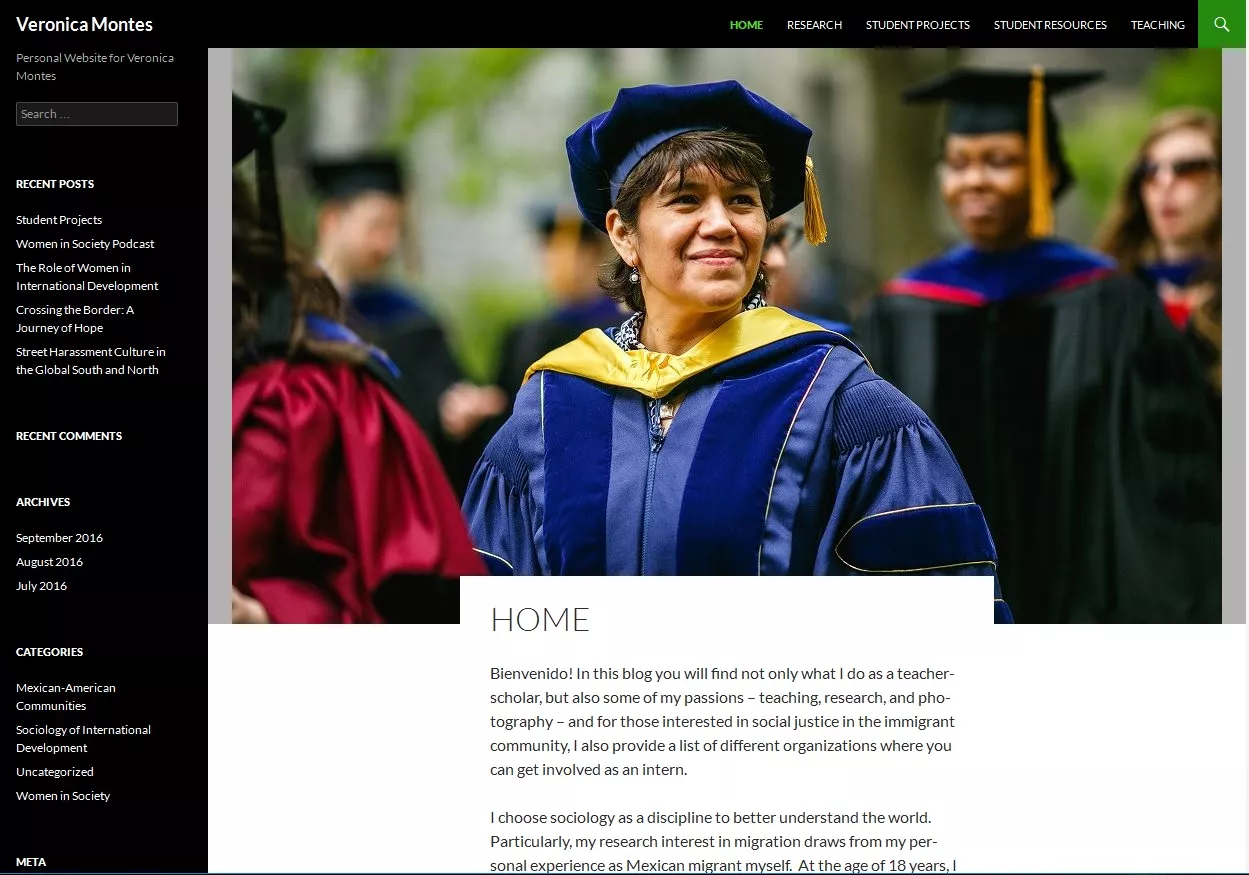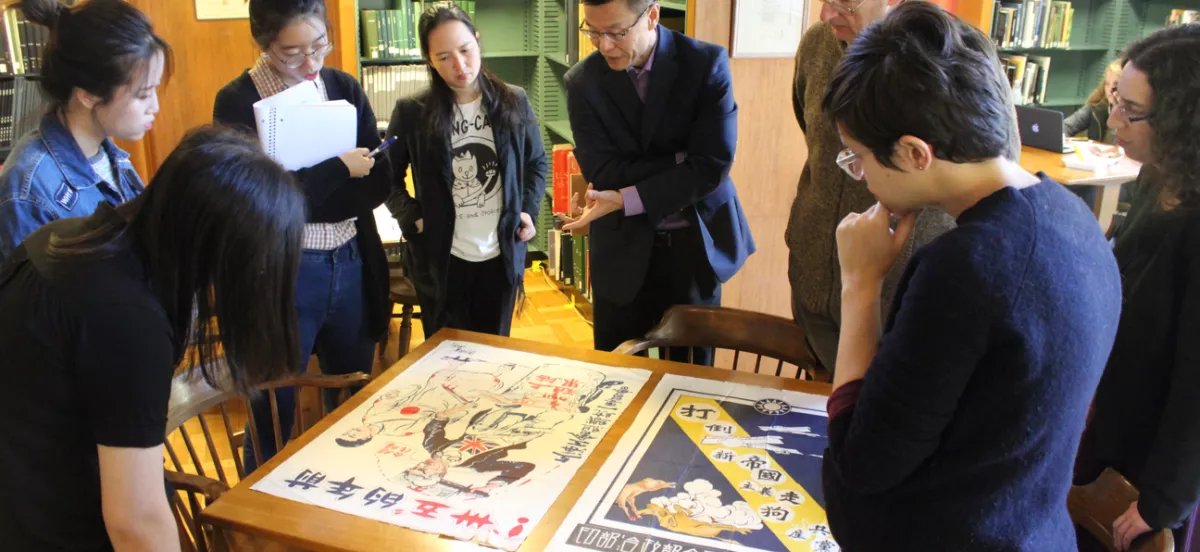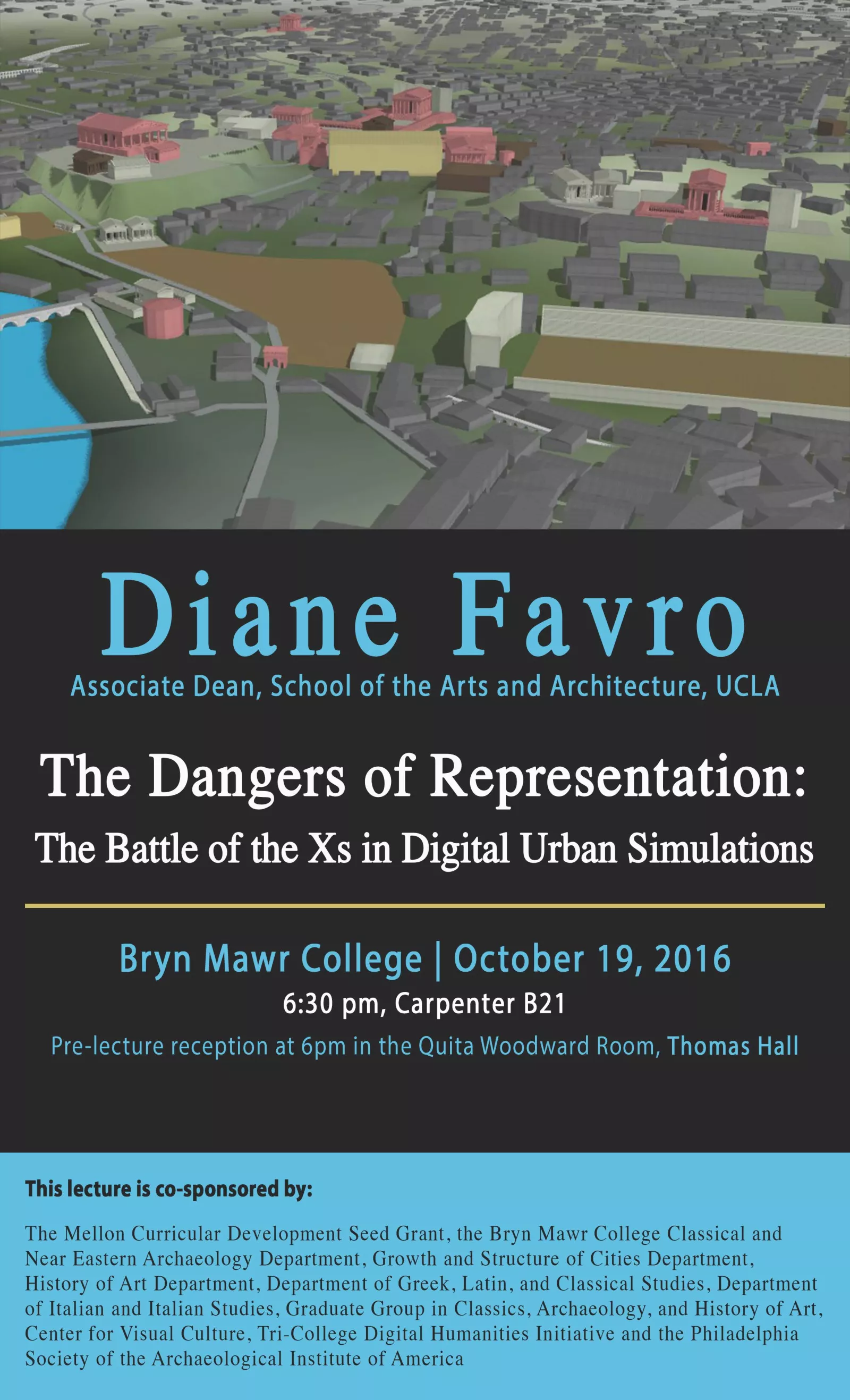2016-2017
- Exploring Sound and Anthropology
- Creating a Digital Cholera Mapping Assignment
- A Digital Archive for Creative Final Projects
- Digitizing Chinese Propaganda Posters
- Digital Technologies, Architecture, and 3D Rome
Exploring Sound and Anthropology
Project Team
Amanda Weidman, Christine Boyland, Melanie Bahti
Courses Involved
Anth B 266 Waves of Power: The Anthropology and Cultural Politics of Sound
Timeline
Platform development: Summer 2016
Piloted in course: Fall 2016
Goals and Description
This is a new course that builds an anthropological understanding of sound as a product of human creativity, human conflict, and human interaction with the material world. Weidman and her students explore the ways that sound is conceptualized and endowed with meaning; how sound becomes linked to identity and social and political hierarchies; and how sound can become a call to action in different cultural and historical contexts.
Students also learn about different ways to record, document, and write about sound by engaging in sound-based ethnographic research of their own throughout the semester. A series of projects involves documenting (in audio/video format as well as through written analysis) different sounds and “soundscapes.” They also learn about sound-related projects in the context of the digital humanities.
Creating a Digital Cholera Mapping Assignment
Project Team
Melissa Pashigian, Beth Seltzer, Han Truong
Courses Involved
Anthropology 210 Medical Anthropology
Timeline
Platform development: Summer 2016
Piloted in course: Fall 2016
Goals and Description
This project adds a module and assignment to Anth 210 that uses a Google Earth Map/GIS mapping approach to investigate the cholera epidemic in London. Students read an historical novel titled The Ghost Map, which details the 1894 London cholera epidemic and the steps John Snow took to determine the source of the cholera epidemic (he ultimately determined that the mode is water and locates a pump in the neighborhood from which affected people draw their water, ending the epidemic). He is considered the father of epidemiology. The Ghost Map includes an historical map of the area of London John Snow analyzed. Making an assemblage of map layers of information from the past and the present to understand the spatial distribution of the epidemic and to better understand how John Snow investigated the epidemic and what information he may have missed gives students a different perspective
than they might gain from the book and lecture alone.
A Digital Archive for Creative Final Projects
Project Team
Veronica Montes, Cathryne Velazquez, Beth Seltzer, Palak Bhandari
Courses Involved
- SOCL 218: Sociology of International Development
- SOCL 225: Women in Contemporary Society SOCL
- 235: Mexican-American Communities
Timeline
Platform development: Summer 2016
Piloted in course: Fall 2016
Project Links
Goals and Description
The aim of this project is twofold: (1) to create a showcase through the development of a website of all Montes's courses where all her students' projects could be displayed, and (2) to continue a more structural integration of digital platforms to be used by Montes's students in their final creative projects.
As part of the assignments in all of Montes's courses, it is a requirement to work on a Final Creative Project. The student selects a topic either covered in the course or an unexplored, but related, topic of the student's interest. The student has the freedom to choose the best way to convey the project. A digital form enables students to disseminate the project not only among other Bryn Mawr and Tri-Co students, but most importantly to an audience beyond the college. Montes worked with student Cathryne Velazquez to set up a website and archive of student work, and Educational Technology Specialists taught workshops on different project software to introduce students to a range of presentation options.
Digitizing Chinese Propaganda Posters
Project Team
Shiamin Kwa, Anna-Alexandra Fodde-Reguer, Yue Xiu, Mengnan Zhang
Course Involved
EALC 225: 100 Years of Chinese Fiction
Timeline
Platform development: Summer 2016
Piloted in course: AY 2016-2017
Project Links
Workshop on Haverford's Chinese Propaganda Poster Collection
Goals and Description
The project involves the digitization and cataloguing of an archive of propaganda posters held in the Quaker and Special Collections of Haverford College’s Magill Library (finding aid). Dr. Cadbury, a Haverford College graduate, was a medical missionary in Canton during the first half of the 20th century, from 1909-1949. In this extensive collection, there is a box containing approximately twenty large-sized propaganda posters dating from the Republican Period in China. The posters, held in the Quaker and Special Collections at Haverford College, are small in number but remarkable due to the fact that they are not Communist propaganda posters but in fact propaganda posters created by the propaganda offices of the Republic of China, the Nationalist Party that eventually fled to Taiwan when the Communist Party took control of the mainland. This is an exceptionally unusual and unique find, due to their historical significance. This project involves the digitization of the archive to create a unique pedagogical resource.
In her course “100 Years of Chinese Literature”, Kwa incorporate the posters and their messages into several units, ranging from the debates on the role of “folk” art in reaching the masses as debated by Lu Xun in his defense of woodcuts in the 1910’s and 1920’s, to readings of Mao’s Talks at Yan’an, and the implications for these posters. Students are able to visit the special collections to view the posters, but they are also able to use the digital resources to curate their own digital collections and to embed images in their written work. A potential assignment for this project is to have a student select one of these posters from the archive and to write an essay-length post on the historical significance of the poster’s content with respect to historical and literary writings from the same period. Future applications include use in a class on the relationship between word and image in graphic narratives. Students may be asked to curate their own collection of posters using posters from this collection as well as Landsberger’s and Evans’ collections on a topic of their choice.
Digital Technologies, Architecture, and 3D Rome
Project Team
Tom Morton
Course Involved
CITY 360: Architecture of the Eternal City: Rome of the Emperors, Popes, and Starchitects
Timeline
Piloted in course: Fall 2016
Goals and Description
Diane Favro (UCLA) visited Bryn Mawr during the 2016 fall term to give a public lecture on her work involving digital technologies and the study of architecture and urbanism. In addition, Dr. Favro met with the students in the Architecture of the Eternal City course, and discussed 3D visualizations of cities, particularly Rome. Further, Dr. Favro led a faculty/staff workshop on 3D visualizations of cities.
Diane Favro is a Professor of Architecture at UCLA, the new associate dean for academic affairs in Arts and Architecture at UCLA, the co-director of the Experiential Technologies Center (Etc.) at UCLA, and was just named a Fellow of the Society of Architectural Historians for lifetime achievement.
In this seminar the students study the major epochs in Rome's glorious history (from its mythological foundations to the contemporary city), and quite understandably, considerable time is spent on ancient Rome. Dr. Favro's visit enables the students to engage not only with the ancient city, but also with how we re-create and understand the ancient city. As part of the course, the students assess a series of digital models/projects of the ancient and medieval city of Rome, and Dr. Favro's visit enables the students to speak with a world leader in terms of digital reconstructions of cities. In preparation for Dr. Favro's visit, the students complete a series of critical readings and assessments of digital projects.


